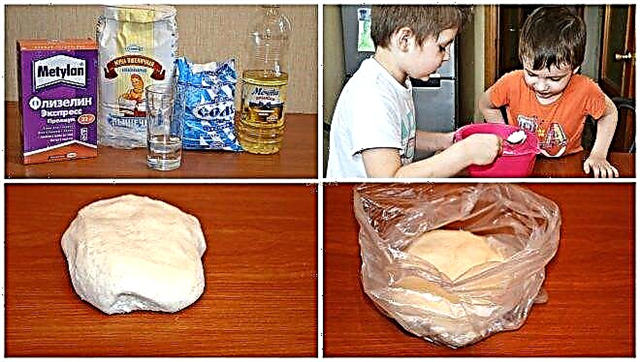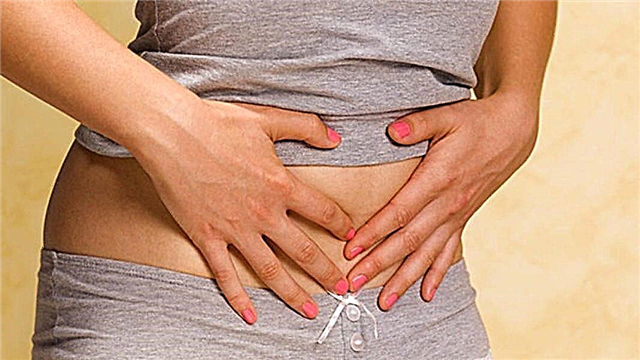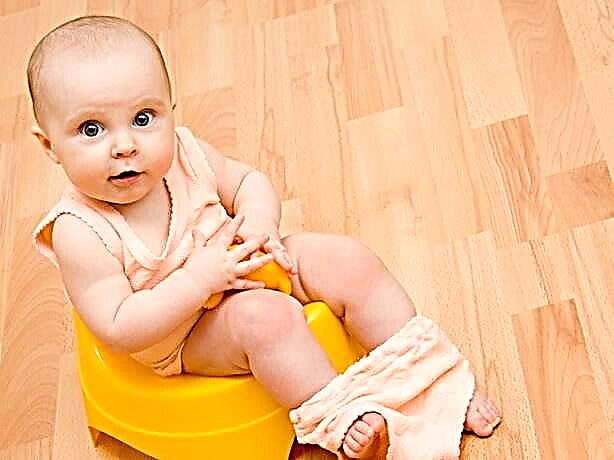
Raising a child is always a huge cost, so even wealthy families often think about how to save money without losing the quality of goods for the baby.
There are things that cannot be saved on principle. But, for example, the famous Play-Doh plasticine, whose positive properties are undeniable, is very expensive, however, according to many housewives, it is successfully prepared with their own hands at home. At least this option is worth trying at least once, because thanks to your own ingenuity, you can reduce the cost of plasticine tenfold.
Why not just buy a cheaper plasticine?
Play-Doh is probably the most expensive sculpting mass of all those on the domestic market, at least in the segment for children's creativity.
This brand has dozens of competitors, and the most famous domestic manufacturers offer plasticine at a price that allows you to buy ten times more mass instead of one set of a famous brand. Nevertheless, many mothers prefer to pay a lot more or make an analogue on their own.


The fact is that the original Play-Doh is very different in properties from the plasticine that even young modern parents are used to in childhood. The key features of this plasticine (and at the same time a properly prepared homemade mass) are as follows:
Complete safety for the child
Despite the fact that almost all types of children's play dough are labeled as safe, except that Play-Doh really meets this definition, because most other types usually contain machine oil.
The American brand, on the other hand, presents edible plasticine, that is, a child can theoretically even eat it. However, since the mass is still not intended for this purpose, a lot of salt is usually added to it, forcing the child to spit out a piece every time, and at the same time - weaned him from pulling anything into his mouth. The homemade recipe may not contain salt - in this case, the sculpted products can be eaten.
Most of the recipes offered on the web do not contain a single harmful component, and although there are exceptions to this rule, they will not be given here.

Highest softness
Classic Play-Doh is not even plasticine, but rather modeling dough.
For those kids who are not lucky enough to tinker with the products of a domestic manufacturer, sculpting turns into torment due to the need to warm up the hardened mass beforehand, but Play-Doh and its home counterparts do not require any preparation - you can sculpt from it immediately.

Long-term storage of results
Despite its softness, such a modeling dough holds its complex shape quite well, so you can sculpt many different crafts from it. At the same time, given the composition of the mixture, it is quite possible to bake it in the oven - then the craft will harden and become more durable.
For really complex products, such processing poses a certain risk, since there is a possibility of changes in the colors and shape of the figure, but the same sculpted numbers and letters can always be immortalized.
If we talk about the advantages of the home version over the factory version, then, in addition to significantly reduced financial costs, it is also worth highlighting the possibility of cooking at any time. For all its merits, Play-Doh should be carefully protected from drying out, otherwise it will lose elasticity and will have to be thrown away.
A self-made replacement is not at all so sorry, because it can be restored for minimal money, not to mention the fact that the range of available colors is almost unlimited.

Ingredients
On the worldwide network, you can find many different options for cooking Play-Doh, but in some of them the authors completely forgot about the main requirement - complete safety for the baby, up to and including preservation of edibility.
If we discard all the dubious ingredients, then the list of components will become almost standard, with minor differences, perhaps in proportions - the density of the resulting mass depends on them.
The main ingredients are ordinary flour, water and finely ground salt. The ratio on average looks like 2: 2: 1 - in the same order as the listed ingredients.
Vegetable oil is also always added to soften (approximately one tablespoon of oil for each glass of flour), and almost always food coloring, unless you plan to create a mass of white.
To increase the elasticity, tartar can also be used (a tablespoon for several glasses of mass is enough), and to improve the perception of the result, you can also add citric acid or aromatic oils to taste.
Cooking method
Further, the cooking mechanism looks extremely simple. All of these ingredients, except for the dyes, are mixed until the most homogeneous state - usually such a liquid is similar in consistency to pancake dough.
The dye can be added as at this stage, and after the preparation of the mass, however, then it is worthwhile to first divide the entire prepared mixture into several parts, each of which will receive its own color.
If it was decided to paint at the mixing stage, then dyes of different colors simply interfere with such parts, after which it is time to move on to the next stage - heating.

The mass is poured into a frying pan or saucepan and placed on the stove, and it is desirable that the heating area is as large as possible, and the mixture is heated evenly. During the heating process, the mass must be carefully stirred all the time to maintain uniformity, due to the increase in temperature, the water from it begins to evaporate, and the future plasticine begins to thicken.
Do not believe the recipes that indicate the exact heating time - it depends on the temperature issued by the stove, the amount of mass and characteristics of the dishes, that is, it is different. Plasticine is ready when and only when it stops sticking to the walls and bottom, and becomes thick enough to be able to keep its shape. Ideally, compare the consistency of the prepared mixture with real Play-Doh, and when they become identical, it's time to remove the clay from the fire.
If the plasticine has not been previously painted, you need to mix the dye into the already solidified mass. It is a little easier with initially liquid dyes, and those that are produced in powders must first be brought to a liquid state - the instructions should be on the label.
In the dough, divided into lumps, small indentations are made, where the dye is poured, after which the mass is thoroughly mixed again. The amount of dye is determined by eye - the more, the brighter the shade is needed. If the shade is pale, the procedure can be repeated several times in a row... Again, you can use completely natural ingredients for coloring - say, juice squeezed from vegetables or fruits of the desired shade.
Some recipe authors indicate that it is better to work with purchased dyes in rubber gloves, but it all depends on the chemical composition of the substance.
Terms of use and storage
The finished home mass is so reminiscent of a real Play-Doh that it copies it even in its main drawback, namely, in the fear of fresh air.
In the open air, the mass loses moisture very quickly, as a result of which it is no longer characterized by elasticity, starting to harden and crumble. In this regard, you need to store home edible plasticine only in plastic sealed containers with a lid., in extreme cases - tightly wrapped in several layers of cellophane, and remove from there - only for the duration of the game.
Experienced parents also point out that storage in the refrigerator slows down the drying process of the mass somewhat - there it can hold out in a suitable form for up to three months.

Be that as it may, Play-Doh, neither real nor homemade, is not eternal material - it dries up gradually as you play. Usually, at first, the mass can be revived a little - for this you need to add a little water to it and knead it thoroughly again... However, this procedure is not a panacea, because dried bread will not become fresh again due to soaking in water - this also happens with the modeling dough.
After a few months, it will become impossible to restore the dried mass, and then the mother will have to do the plasticine again (unless the baby uses all the supplies earlier). However, this is not difficult.


The opposite situation, when plasticine, on the contrary, absorbs excess water from the atmosphere, happens quite rarely, but it is considered fixable by simpler methods.
As a rule, in this situation just re-heat the mass - as if it is being prepared again, thanks to which it will dry out and will again keep its shape.
You will learn more about how to make an analogue of Play-Doh at home in the following video.



